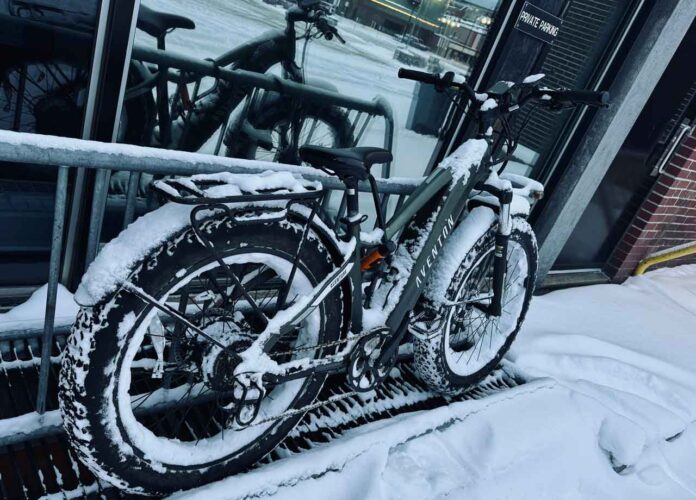Thunder Bay – Living – Thunder Bay’s cycling scene is booming, and with it, the number of winter riders braving the snow and ice is growing.
Whether you’re a seasoned cyclist or an e-bike enthusiast, embracing winter riding opens up a whole new world of exploration and freedom.
But before you hit the trails or streets, make sure you and your bike are properly equipped for the challenges of winter riding.
Preparing Your Bike (and E-Bike) for Winter
- Tires: Swap out your regular tires for winter-specific ones with deeper treads or studs for better grip on snow and ice. Wider tires, often called “fat tires,” provide even more stability and traction.
- Fenders: Full fenders are essential to keep you and your bike clean and dry from slush and snow spray.
- Lights: With shorter daylight hours, powerful front and rear lights are crucial for visibility.
- Brakes: Ensure your brakes are in top condition and adjusted for winter conditions. Disc brakes generally perform better than rim brakes in wet and snowy conditions.
- Lubrication: Use a winter-specific lubricant on your chain and other moving parts to prevent freezing and corrosion.
- E-Bike Specifics:
- Battery Care: Cold temperatures can reduce battery life. Keep your battery indoors when not in use and consider using a neoprene cover to insulate it while riding.
- Tire Pressure: Adjust tire pressure for optimal traction in snow and ice. Slightly lower pressure can improve grip.
- Motor and Connections: Check all electrical connections and ensure they are clean and dry to prevent issues in wet conditions.
Gearing Up for Winter Riding
- Layering: Dress in layers to regulate your body temperature. Start with a moisture-wicking base layer, add an insulating mid-layer, and top it off with a windproof and waterproof outer layer.
- Extremities: Pay close attention to your extremities. Invest in:
- Gloves: Waterproof and windproof gloves are essential. Consider using pogies, which attach to your handlebars and provide extra warmth and protection.
- Headwear: A thin, warm hat that fits under your helmet is crucial. Balaclavas or neck gaiters can provide extra face protection.
- Footwear: Waterproof and insulated boots are a must. Consider using overshoes to add another layer of protection.
- Helmet: Choose a winter-specific helmet with good ventilation and coverage. Some helmets have removable ear covers for added warmth.
- Eye Protection: Goggles or clear glasses protect your eyes from wind, snow, and glare.
Safety First
- Ride Defensively: Be extra cautious on snow and ice, and anticipate slippery conditions.
- Be Visible: Wear bright clothing and use reflective gear to increase your visibility to drivers.
- Know Your Route: Plan your route carefully and avoid areas with heavy traffic or challenging terrain.
With the right preparation and gear, winter biking in Thunder Bay can be a safe and enjoyable experience. So bundle up, embrace the elements, and enjoy the unique beauty of winter on two wheels!







